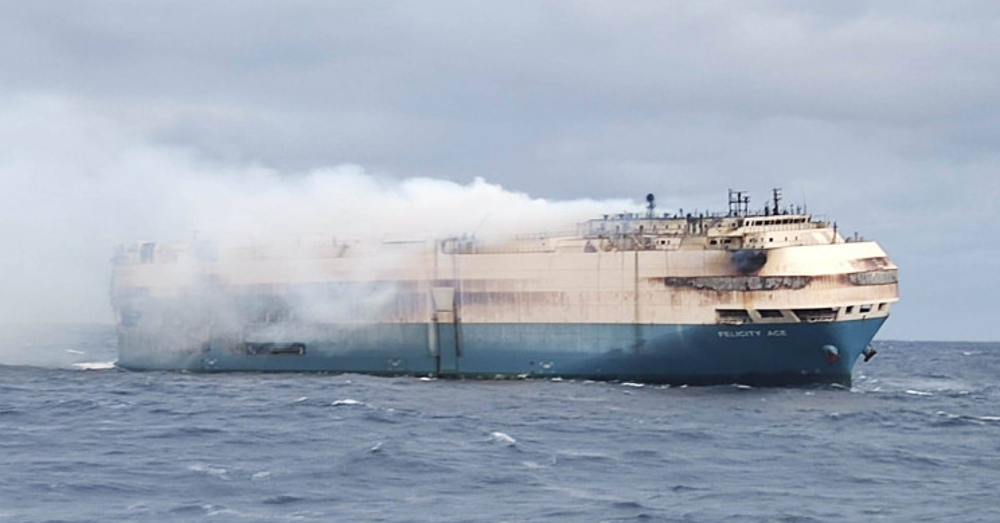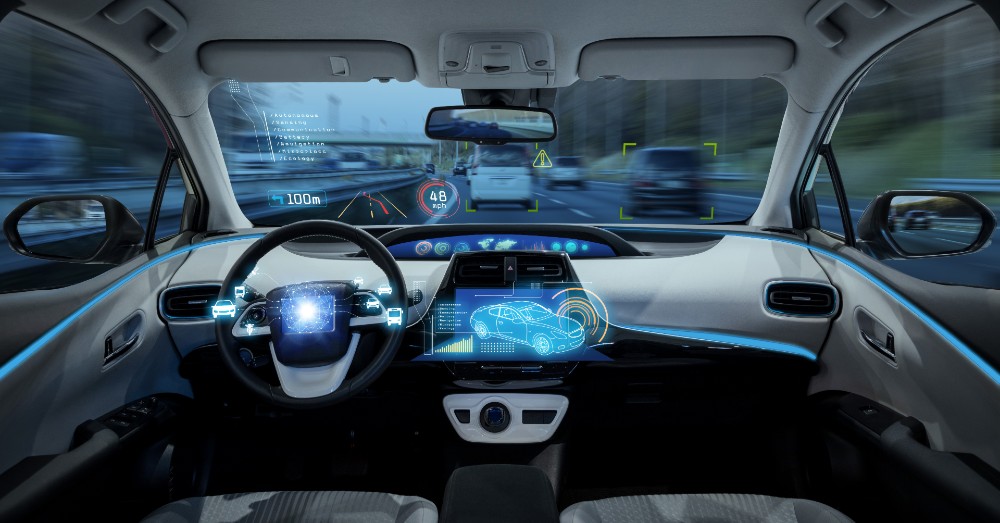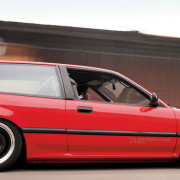The Felicity Ace Fire is only one in a line of car carriers that have caught fire, capsized, or sunk while transporting cargo across the sea.
Unlike most cargo ships, Those carrying cars are often loaded by driving the vehicles onto the ship and then strapping them down. This means the cars need to have some fuel in them or the batteries charged. We don’t yet know the cause of the fire aboard the Felicity Ace, but we do know 3965 models from the Volkswagen Group were on board. This means a mixture of Volkswagens, Porsches, Bentleys, and Lamborghinis that won’t make it to the United States.
These Ship Accidents Occur More Often Than You Might Think
Since 2002, there have been eight major accidents involving car carriers. This means we’ve had one of these massive ships wrecked once every two and a half years. That’s not very often, but considering the cost of the cargo, it can be alarming. Considering the most recent accident with the Felicity Ace catching fire costing nearly $400 million to the VW Group, which sounds like a lot to most of us. This family of automotive brands sold nine million cars last year, which means the number aboard this ship is a loss they can easily absorb.
What are the Major Incidents Involving Car Carriers Since 2002?
Tricolore
The English Channel was the site of this shipping incident in 2002. The Tricolore was rammed into, causing it to sink. This took 2871 BMWs, Volvos, and Saabs to the bottom of the channel. Because the ship was in shallow water, it had to be cut into nine sections, hauled to the surface, and scrapped. All of the cars were lost and scrapped as well.
Hyundai 105
Another shipping accident took place in 2004 when the Hyundai 105 collided with a tanker off the coast of Singapore. This other ship was the tanker MT Kaminesan, carrying close to 280,000 tons of crude oil. When the ships collided, the tanker drove a 165-foot hole in the side of the car carrier. This sank the carrier, which had 4191 new Hyundai and Kia cars aboard,and1000 used Japanese cars. This incident was one of the more serious accidents involving car carriers because of the crude oil aboard the other ship, which is known to pollute the ocean.
Cougar Ace
When 2006 rolled around, another incident involving a ship full of cars took place. The Cougar Ace was carrying 4700 Mazdas, and it was shifting ballast water when it tipped over. This occurred off the Aleutian Islands. The ship was towed to Portland and righted, but all the cars were crushed and recycled. The changing of water ballast occurs in many areas of the world, but when some water is released, the same amount must replace it. This is a dangerous activity, and if it goes wrong, the ship can roll over, which happened in the case of the Cougar Ace.
Baltic Ace
You would think the vastness of the oceans would keep collisions from happening out at sea. So far, three of the four accidents involving car carries have been collisions, including this one. The Baltic Ace collided with a container ship and sunk about 25 miles off the coast of Rotterdam. Unfortunately, 11 sailors lost their lives in this accident, which is much more tragic than the cars lost. Like the Tricolore, this ship had to be cut into pieces and hauled away on barges to be scrapped and recycled. The 1400 Mitsubishi models aboard the Baltic Ace were destroyed.
Hoegh Osaka
Here’s another example of how important the water ballast of a ship is to it staying upright. With a load of heavy Land Roves aboard this ship, the Hoegh Osaka tipped over when attempting to turn to port off the coast of England. This accident took place in 2015, and when the turn began, the ship rolled on its side. The ship was towed to Southampton and brought back to an upright position. Once righted, the crew unloaded the 1400 Range Rovers, Jaguars, and Minis. In this case, the crew salvaged some of the vehicles, which doesn’t often happen during these shipping accidents.
Modern Express
Not every accident involving car carriers ends with scrapping a fleet of cars. When the Modern Express tipped over in the Bay of Biscay in 2016, it carried earth-moving equipment and logs. The location of the Bay of Biscay is between France and Spain. Heavy winds caused this ship to tip over. The ship was towed to Bilboa, Spain, and put back upright when the weather got better. Once righted, the cargo was unloaded, and the ship scrapped because it sustained too much damage to go back out to sea.
Golden Ray
This is another example of the lack of water ballast in a ship. While necessary to allow a ship to safely make the crossing from one continent to another, it’s the cause of this accident. The Golden Ray capsized off the coast of Georgia in 2019 while carrying a load of 4200 Kias and Hyundais. The complete capsizing of this ship in deep water caused it to be declared a total loss. To combat water ballast issues, some shipping companies are studying the use of UV technology to purify the ballast water, which would mean it would not need to be changed out as often.
Felicity Ace
The most recent accident and the one that brought us to this subject is one of these modern car carriers to run into trouble with fire. As we mentioned, the Felicity ace was carrying a full load of VW Group vehicles. It caught fire 1000 miles off the Portuguese coast near the Azores. We don’t expect to recover any vehicles, and the ship might be a total loss. This, along with the cause of the fire, will remain a mystery until the Felicity Ace reaches port.
Eight car carriers losing most of their cargo over the past twenty years isn’t as alarming as it might sound. Only one of these ships has an incident compared to 150 for other types of commercial shipping troubles, making ships carrying cars relatively safe.




